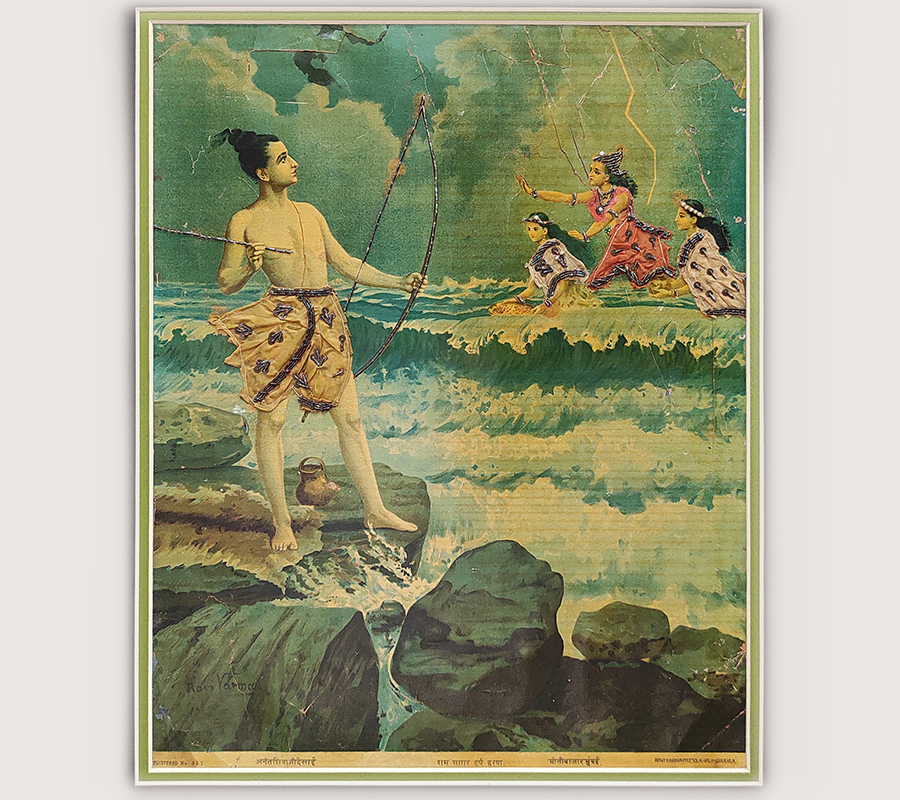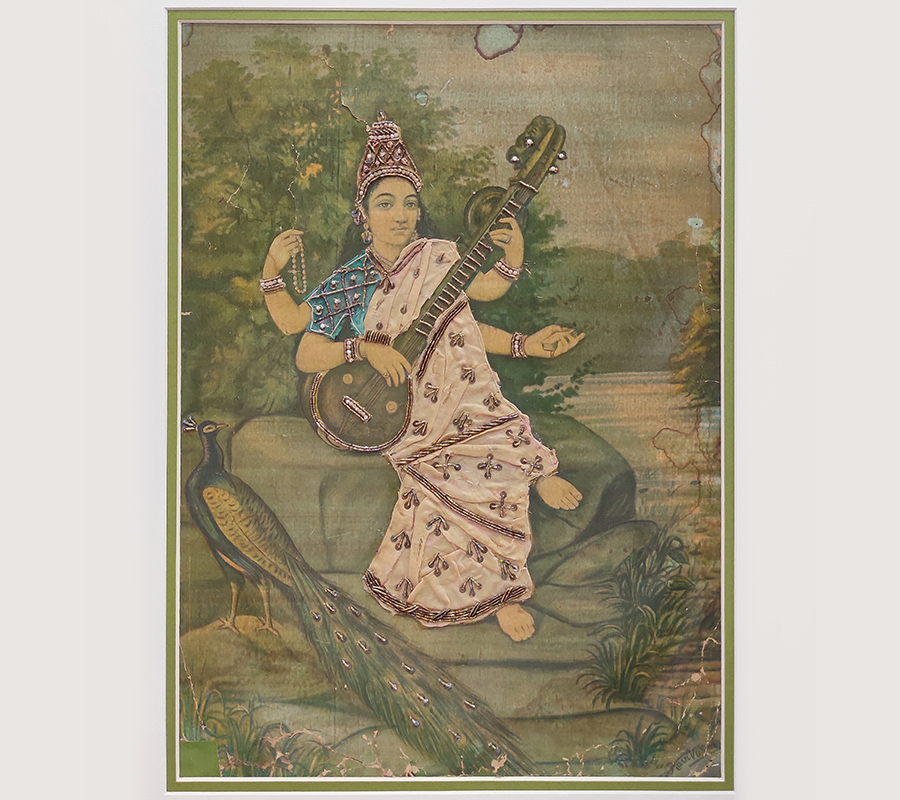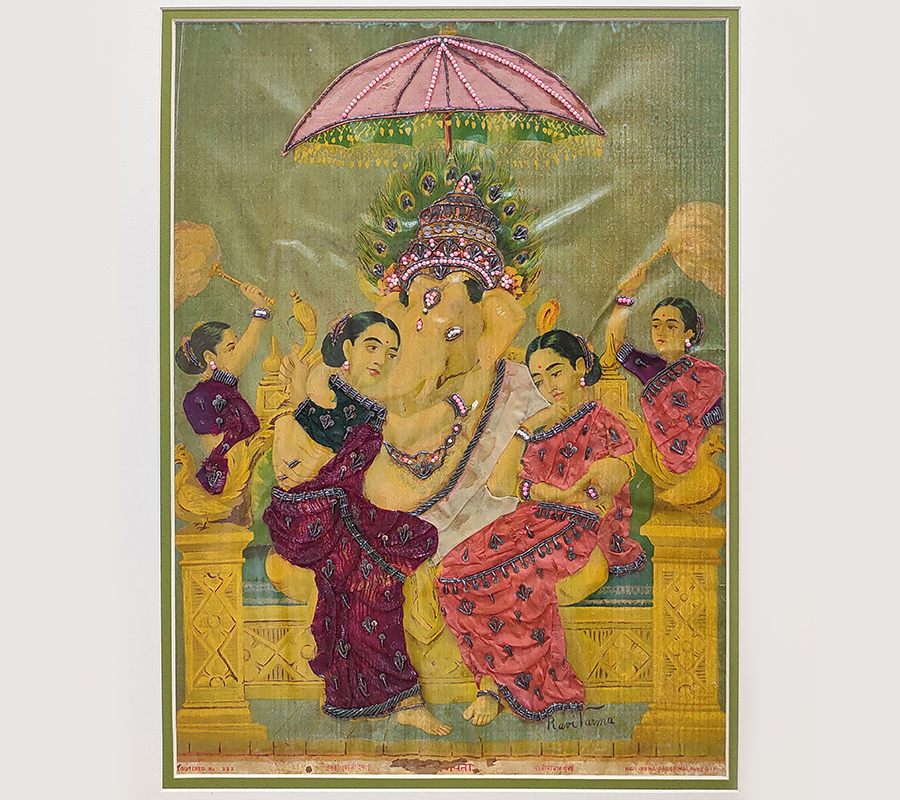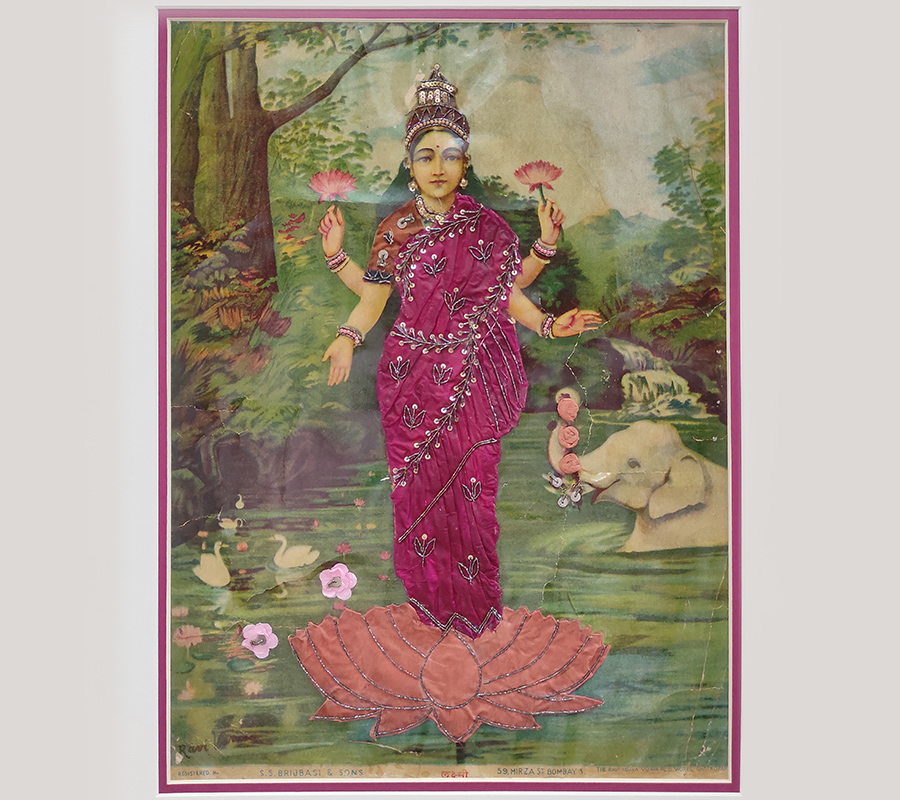Celebrating Raja Ravi Varma
Inaugurated by KETAN MEHTA & NANDANA SEN and the team of the film ‘Rang Rasiya’ Colours of Passion.
Excerpts of Nandana Sen’s speech at the Press Conference at Cosmic Heart Gallery, Lead actress, RANG RASIYA – which is biopic on the Painter Prince Raja Ravi Varma
He was the first artist in India to bring technology into his art. He was a real innovator and it seems that this gallery is one that is based on innovation as well and it really has a very strong focus on supporting new artists; at the same time it embraces the tradition that has been created by great artists such as Raja Ravi Varma.
Just looking at this wonderful exhibition, I also remember that Raja Ravi Varma was in fact the first person to do a public exhibition of art in India. So this is a wonderful tribute to not only his art, but also the ways in which he democratized God, making art available to everybody as well as reaching thousands of people.
So this is a great moment to celebrate his work, great moment to celebrate the tremendous work and creative energy in this gallery. I found out the one of the kind of driving concepts behind this gallery is positive energy and I think that is a blessing to us to be here today.
Collection of Raja Ravi Varma Lithographs ~
– Reviving & recreating art & history
About Raja Ravi Varma
Raja Ravi Varma, the much-acclaimed ‘Painter Prince’ was known over the last century as the ‘Grandmaster Genius’ of the Indian art world.
He was born on 29th April, 1848, in Kilimanoor, a small town in Kerala. He is known for his amazing paintings, which revolve mainly around the great epics: the Mahabharata and Ramayana.
Raja Ravi Varma is one of the few painters who had managed to accomplish a beautiful unison of Indian traditions with the techniques of European art.
He left for the holy abode on 2nd October, 1906, leaving behind his legacy of magnificent paintings.
Style and impact
The indelible impression of Gods and Goddesses that Indians have can be attributed largely to the visual cultural heritage of Raja Ravi Varma. His depiction of the Goddesses Saraswati and Lakshmi received nationwide recognition and all previous representations faded from the memory of the people. Almost all the characters from the epics and the Puranas have been represented in his art.
Raja Ravi Verma’s paintings of beautiful sari-clad women have also received recognition in the West. His depictions of Indian women drew such appreciation that a beautiful woman would often be described as looking “as if she had stepped out of a Varma canvas.”
Varma adapted Western realism to pioneer a new movement in Indian art. His great desire that his paintings should not be in the possession of royal families alone, led to the starting of the Lithographic Press. In 1894, he set up a Lithographic Press in order to mass-produce copies of his paintings as Oleographs, enabling ordinary people to afford them. That innovation resulted in the tremendous popularity of his images, which became an integral part of popular Indian culture thereafter.
Since there was no colour printing in India at that time, the machinery was imported from Germany along with German technicians, and this was the first Lithographic Press in India. By this, his paintings were printed in large numbers and were given a place of pride in most houses all over India in the late 19th and early 20th Centuries.
Varma was the first Indian to use Western techniques of perspective and composition and to adapt them to Indian subjects, styles and themes.
About Rashme Mehta’s journey in reviving this art
Rashme Mehta, who had been a lover of art for many years received the artist’s Press as family heirlooms. “Having set to work to bring alive history from the times of the ‘Painter Prince’ has been an enjoyable and enlightening journey for me. My intent is to work at reviving and preserving this wealth of art, knowledge and our Indian culture, so that it will be well received by our youth today and in the future,” says Rashme Mehta
“These lithographs are his works on limestone which was the technique used in those times for printing. Today with modern technology, this method of printing is extinct, hence rendering the limestone (with the various subjects taken from his oil paintings and then transferred onto the stone) as priceless,” adds Rashme.
About the special body of work created
“These historical images on limestone have been recreated from the text of the artist’s works and from documentation of the various subjects which I have researched in the last fifteen years,” says Rashme Mehta.
“Having had access to the press, it became possible for me to know the various historical images and subjects which existed in those times. These stone lithographs have been reproduced in archival UV-ink, whereby the care undertaken involves that they need to be protected from harsh sunlight and water. The longevity of these prints is close to 80 years if used indoors and maintained well,” she adds.
Cosmic Heart takes great pride in collaborating in this unique project, which has been driven by passion & a commitment to take forward the legendary artist’s vision. This living room collection has been designed especially to add to the aesthetics of many homes.
It is about bringing back our cultural heritage, our ‘Indian Sanskriti’, epic stories, history of a bygone era, alive once again into our homes, to pass onto our next generations.








